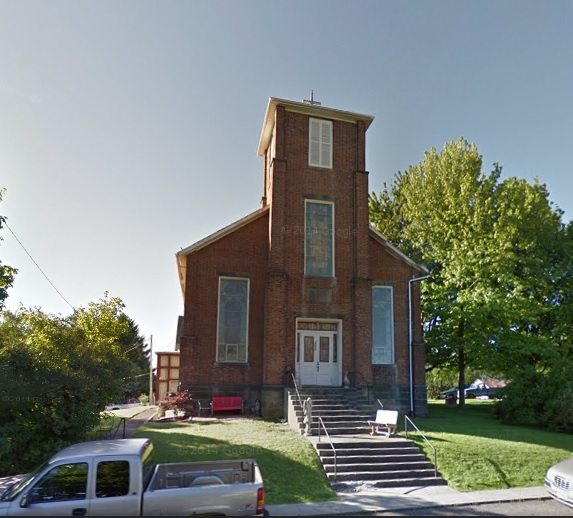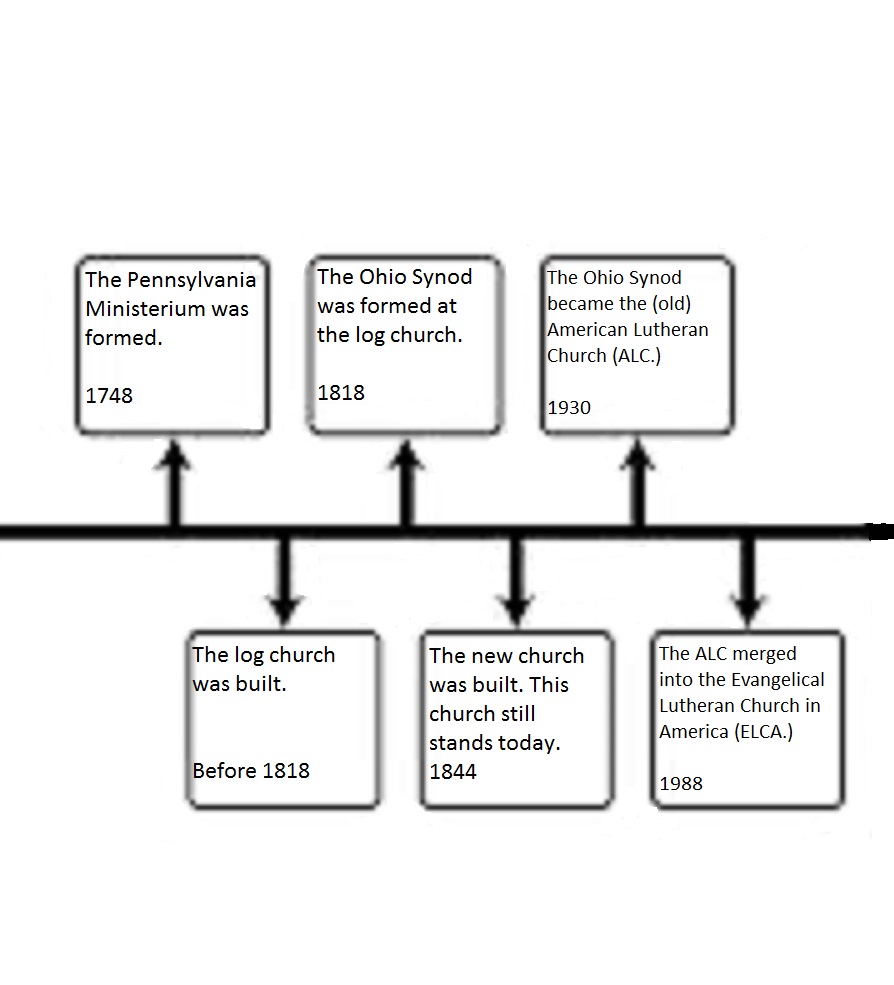
The 1844 church as it stands today.

St. Paul Evangelical Lutheran Church. Somerset. Perry County. Ohio.
The original St. Paul Evangelical Lutheran Church, made of log, was the site where the Ohio Synod was founded on September 14th, 1818. A unique and surprising feature of the simple log church was a pipe organ. Previously organized under the Ministerium of Pennsylvania in 1812, the distance and the difficult travel between the two states caused Ohio churches like St Paul Evangelical Lutheran to move towards autonomy. In 1816, representatives were sent to Pennsylvania to petition for independence, but the measure was rejected. The group persisted, however, and declared itself independent during a meeting of ten pastors, two applicants for lay ministry, and eight lay persons. The congregation grew out of the log church that was shared with a German Reformed congregation in town, and with generous donations a new church was built in 1844 on W. Main Street. Although the 1844 building is still occupied by the church, the old site no longer stands, having been replaced by the Old Lutheran Cemetery that holds some of the people who helped found. St. Paul Evangelical Lutheran Church and a historic landmark containing a brief history of the original church. The first pastors of the church, Stough and Henkel, ministered to this population of mostly Pennsylvanian immigrants in both English and German, though both men preferred the German language. The two men also ordained three other pastors during the first meeting of the Synod due to the pressing need for ministers in the Ohio frontier. Stough, whose name is also recorded as Stauch, was licensed to preach in 1794 and ordained in 1804. He was deeply influenced by the pietism that emerged from the Halle School in Germany because it was the type of Lutheranism that he was exposed to in the Ministerium. According to the book All These Lutherans, “His chief passion in life was clearly the preaching of the word of salvation to people.” Stough was also concerned about how these people lived due to the dancing and disrespect to the Sabbath he perceived on the frontier. He also regularly railed against alcohol, preaching “that the only safe way was to abstain from it entirely… But I met with strong opposition from many of my Lutheran members by opposing and condemning these immoral practices.” (All Those Lutherans). Riding for many years as a circuit preacher in Ohio, he also served as the first president of the Ohio Synod, presiding for six years.At the beginning of the synod, an attempt at unification with the General Synod failed due to perceived doctrinal indifference on the part of the latter. Recently arrived German immigrants were much less inclined to accept doctrinal wiggle than the parishioners who originally formed the church. Stough soon distanced himself from the more conservative route the Ohio Synod was taking, however, feeling that a more moderate English-speaking Lutheranism was the way for the frontier. Yet his role in the founding of the Ohio Synod and at St. Paul Evangelical Lutheran looms large over its history.
Over time the Joint Ohio Synod became more open to merging, joining with other Lutheran groups to from the American Lutheran Church, which eventually merged with the Lutheran Church in America and the Association of Evangelical Lutheran Churches to form the Evangelical Lutheran Church in America.
Connor Cejda and Heather Vikla
Bibliography
1. http://www.remarkableohio.org/HistoricalMarker.aspx?historicalMarkerId=915
–Information on the historical marker in Somerset, Ohio
2. http://www.google.com/url?sa=t&rct=j&q=&esrc=s&source=web&cd=11&ved=0CGMQFjAK&url=http%3A%2F%2Fwww.wlsessays.net%2Ffiles%2FLuchtStPaulConfessionalLutheranism.pdf&ei=41DJVOqUAs6uyAS5jYLoCg&usg=AFQjCNGQ3IxaXgQdbCYy7UrZFaoBo2vzvw&bvm=bv.84607526,d.aWw
–PDF file submitted to Prof. Frederich on the history of St. Paul Evangelical Church of Columbus, Ohio and the Ohio Synod.
3. Charles P. Lutz, ed. Church Roots: Stories of the Nine Immigrant Groups that Became The American Lutheran Church. Augsburg Publishing House, 1985.
–Book about the formation of the Ohio Synod.
4. Sheatsley, C.V. History of the Evangelical Lutheran Joint Synod of Ohio and Other States: From the Earliest Beginnings to 1919. Columbus, OH: Lutheran Book Concern, 1919.
–Book containing a brief background on the formation of the church in Somerset, Ohio.






You must be logged in to post a comment.